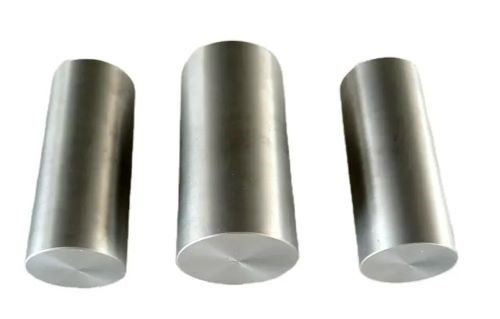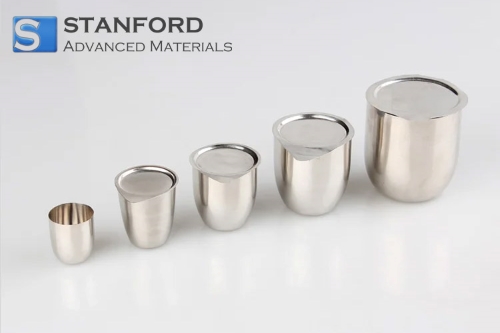Prime Molybdenum Alloys and Their Uses
Introduction
Molybdenum alloys are a group of materials that are composed of molybdenum and other elements. These alloys have excellent properties, such as high melting point, good thermal conductivity, and corrosion resistance. They are used in a variety of industries, including aerospace, defense, medical, and electronics. In this article, we will discuss some of the prime molybdenum alloys and their uses. Hope that you can have a further understanding of these molybdenum metals and alloys.

Figure 1. Molybdenum Alloys
Titanium-Zirconium-Molybdenum (TZM) Alloy
Titanium-Zirconium-Molybdenum (TZM) alloy is an impressive molybdenum-based alloy. It is composed of molybdenum, titanium, and zirconium. A small amount of tiny fine carbides are added as well. Titanium-Zirconium-Molybdenum alloy is much stronger than pure molybdenum and other molybdenum alloys. It also stands out for its higher recrystallization temperature and better creep resistance.
With all these features, TZM alloy could withstand high temperatures and harsh conditions. It is easy to find TZM alloy in high-temperature applications. For instance, because of its strength and high recrystallization temperature, TZM alloy is the choice material for hearths and horizontal posts in the vacuum furnace industry. Additionally, TZM is applied to make medical diagnostic devices including rotating anodes in X-ray tubes. This tough alloy is employed in the aerospace industry for rocket nozzles, heat shields, and gas turbines as well.
Related reading: TZM Alloy Applications, Properties & Preparation Methods
Molybdenum-Lanthanum (Mo-La) Alloy
Molybdenum-Lanthanum (Mo-La) alloy is another popular molybdenum alloy that contains a small amount of lanthanum oxide. This alloy has better mechanical properties, including high ductility, toughness, and tensile strength, so it is more resistant to cracking and deformation under high-stress conditions.
Molybdenum-Lanthanum alloy has high-temperature performance, and it is less prone to oxidization. The addition of lanthanum oxide offers the alloy a special stacked fiber structure that remains stable at 2000 °C. Mo-La alloy is also resistant to creep and corrosion.
Molybdenum-Lanthanum alloy is ideal for high-temperature applications and lighting applications. It is used to produce the internal part in light bulbs, high-temperature heat shields, high-temperature containers, electric vacuum devices, power semiconductor devices, and components in microwave magnetrons.
Molybdenum-Tungsten (Mo-W) Alloy
Tungsten is added to manufacture Molybdenum-Tungsten (Mo-W) alloy, which has good performance at high temperatures. It is characterized by excellent thermal conductivity, high melting point, good resistance to thermal shock, improved corrosion resistance, and enhanced etchability.
Mo-W alloy is good at preventing the corrosion of molten zinc as well. You can find these alloys in some corrosion-resistant parts of zinc liquid temperature measuring tubes and zinc smelting furnaces. Molybdenum-Tungsten alloys can also find applications in the electronics industry for vacuum tubes and X-ray tubes and in the aerospace industry for rocket nozzles and heat shields.
Molybdenum-Rhenium (Mo-Re) Alloy
Molybdenum-Rhenium (Mo-Re) alloy is made from molybdenum and rhenium. This alloy has excellent high-temperature strength and ductility. Mo-Re alloy is primarily applied to produce thermos-element wires where high ductility and great strength matter. It is used in the aerospace industry for rocket nozzles, gas turbines, and jet engine parts. Mo-Re alloy is also employed in the medical industry for radiation shields and X-ray targets.
Molybdenum-Copper (Mo-Cu) Alloy
Molybdenum-Copper (Mo-Cu) alloy contains molybdenum and copper elements. Mo-Cu alloy has excellent thermal conductivity and a low thermal expansion coefficient. It has applications in the electronics industry for heat sinks, microwave carriers, and high-power laser diode submounts.
Molybdenum-Silicon (Mo-Si) Alloy
Molybdenum-Silicon (Mo-Si) alloy is composed of molybdenum and silicon. It has excellent high-temperature strength and good oxidation resistance. Mo-Si alloy finds applications in the semiconductor industry for furnace components.
Conclusion
Molybdenum alloys have a wide range of applications due to their excellent properties. They are used in various industries. The choice of molybdenum alloy will depend on the specific application and the requirements of the project. Whether it is a Mo-W alloy for rocket nozzles or a Mo-Cu alloy for heat sinks, molybdenum alloys have a critical role in many industries.
Stanford Advanced Materials (SAM) is a reliable supplier of molybdenum and its alloys. We have the tough titanium-zirconium-molybdenum alloy, the ductile molybdenum-rhenium alloy, and the molybdenum-lanthanum alloy with high-temperature performance. Please send us an inquiry if you are interested.



